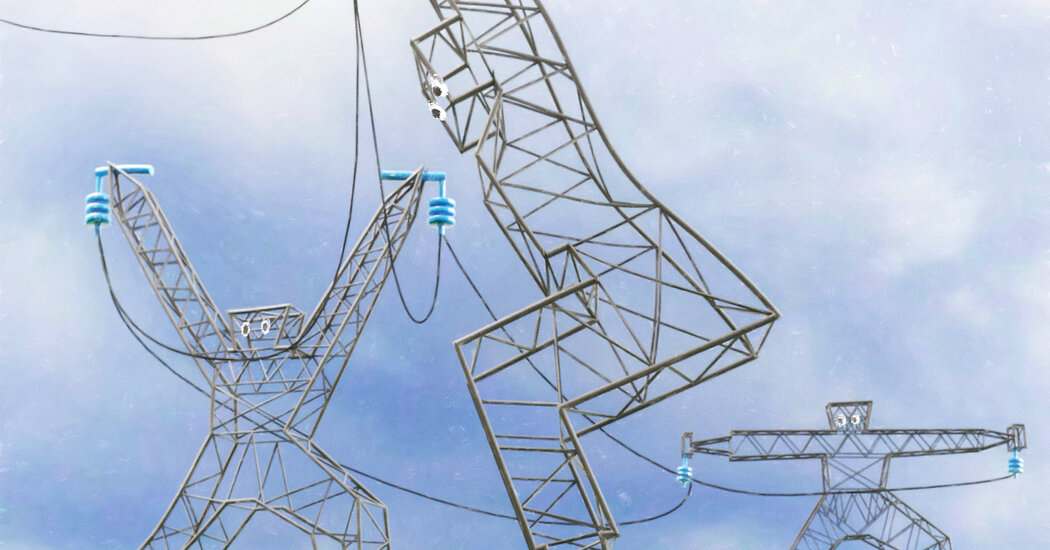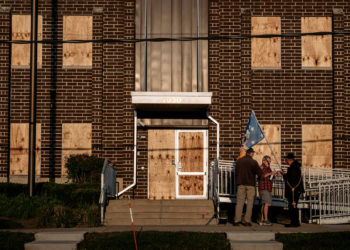Amy Wasserman and her husband were stunned when the energy bill for their home in Wilmington, Del., topped $500 in September — the highest it had ever been and almost double what they typically pay. They say they’ve done nearly everything experts advise to cut energy use: installed new windows and ductless heat pumps, upgraded to efficient appliances and sealed their basement. “Yet the bill continues to go up,” Ms. Wasserman told me.
Dale Williams and his wife, who’ve lived in the same house in New Jersey for 30 years, opened their August bill to find a charge of $766 (over $250 higher than what’s typical for them that month). Their electricity costs have climbed even though their use hasn’t changed meaningfully from previous years.
After nearly two decades of relatively flat prices, U.S. residential electricity rates have risen sharply since 2022, with increases of more than 20 percent in some states. It’s happening at the same time as, but not always as a result of, a surge in power demand from new factories, electric vehicles and heaters and, of course, data centers and the artificial intelligence companies that rely on them.
To understand how the price spikes land on real families, Times Opinion invited readers to share their electricity bills. Dozens did, and their stories revealed just how helpless many people feel to stop the increases. Their experiences also expose a deeper problem: a power system where every uptick in demand triggers costly new infrastructure instead of better management of what we’ve already built. Something has to change.
For the moment, higher power bills stem mostly from volatile natural gas prices and the costs utilities are passing on to customers to modernize the aging grid and rebuild power lines and substations damaged by wildfires in the West, hurricanes along the Gulf and Atlantic Coasts and other extreme weather.
Electricity markets are also beginning to feel the squeeze from an explosive growth in new users. Take the country’s largest power market, serving the Mid-Atlantic and some of the Midwest, where tight supply and dozens of new data centers have led to a nearly tenfold jump in the cost of guaranteeing enough power supply when it’s most needed.
The new electricity demand doesn’t automatically raise bills. A recent study showed that states where electricity use grew fastest often saw average household prices fall, while states with flat or declining use saw prices rise. The impact depends, in significant part, on how cleverly the existing grid is managed — and whether that new energy demand occurs at times when the grid is already strained.
Much of the grid sits idle most of the time. On a typical day, only about half of its capacity is in use, and the country’s most efficient gas plants run less than 60 percent of the time. Because the system must be able to handle its busiest hours — those moments during a heat wave or a cold snap when almost every air-conditioner, heater, factory and data center is running at once — those few peaks in demand end up determining everything, including the size of our power plants, the thickness of our wires and the bills we pay. Trim use during those peaks, and the cost savings ripple everywhere.
The solution is simple: Ask the largest power users to draw a little less from the grid during the limited hours when it’s most strained. They can do that by running briefly on batteries, using electricity generated on site or shifting workloads. Average Americans would never notice — emails would still send, chatbots would still respond and websites would still load — but the grid would breathe a little easier.
In a study I led earlier this year, my colleagues and I found that if big new power users curbed demand just 0.25 percent of the time — about 22 hours a year — the United States could accommodate more data centers without burdening household electricity users. Another analysis found nearly the same thing: Cutting grid use during just 10 of the year’s busiest hours provided nearly the same benefit as building a new power plant.
For data centers, this flexibility doesn’t have to be a burden — it can be the fastest path to connect to the grid. Some are beginning to use batteries and varied schedules to come online years faster than if they waited for utilities to upgrade the grid to accommodate them. Google has signed contracts in Indiana, Tennessee and Arkansas that commit its data centers to reducing grid demand when supplies run tight, while Iron Mountain Data Centers is deploying batteries in New Jersey that can temporarily power its facility independently from the grid. And in states like Texas, regulators are beginning to require large users to be the first to cut their power use during emergencies, helping spare households from outages.
The federal government is now validating this approach. In an extraordinary move, on Oct. 23 the Department of Energy directed the Federal Energy Regulatory Commission to propose a rule that would allow new data centers and factories to plug into the grid years sooner if they agree to lower their use during the rare hours when supplies run tight. The proposal has drawn strikingly broad, bipartisan support.
Some data centers that specialize in instant, on-demand services — like web search, streaming or chat — may find it impractical to dial back during peak hours. But even then, similar benefits can be achieved if data centers pay residential and business electricity consumers to shift their use during extreme peak hours with smart thermostats, networked appliances and battery systems that can adjust automatically. That could provide the same relief for the system while data centers compensate other users directly.
None of this requires new legislation or complex coordination across 50 states. It simply requires the data center industry to embrace flexibility as part of the solution and for grid planners to make room for it. This won’t eliminate the need for more infrastructure, but paired with grid-enhancing technologies and smarter utility incentives, it can reduce how much we need to build and how much customers ultimately pay.
For families watching their power bills climb, that change can’t come soon enough.
Tyler H. Norris is a fellow at Duke University, where his doctoral research focuses on bulk power systems. He was named to Time’s 2025 Climate 100 list.
The Times is committed to publishing a diversity of letters to the editor. We’d like to hear what you think about this or any of our articles. Here are some tips. And here’s our email: [email protected].
Follow the New York Times Opinion section on Facebook, Instagram, TikTok, Bluesky, WhatsApp and Threads.
The post A Simple Fix to America’s Soaring Electricity Prices appeared first on New York Times.




